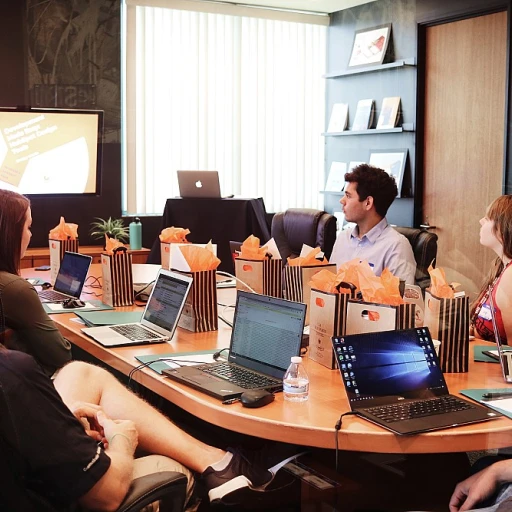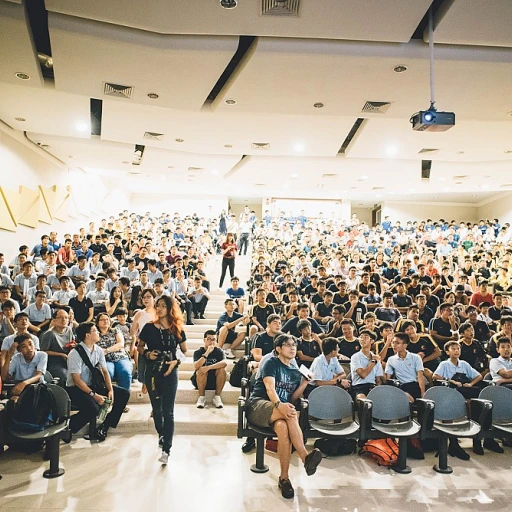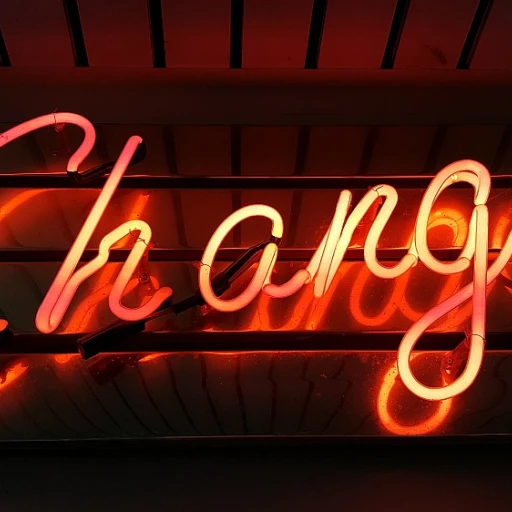
The Purpose of HR Recording
The Importance of Documenting the Interview Process
Recording HR job interviews serves a crucial role in ensuring transparency and fairness within the hiring process. Employers increasingly opt to record these proceedings to create a reliable record that can be referenced in future evaluations or disputes. Recordings offer an objective account of what transpired during the interview, which can help in preventing misunderstandings that could arise from memory lapses or subjective interpretations. Employers find recordings particularly useful in cases where there is a need to ensure compliance with employment law or company policies. A recorded conversation helps in protecting both the employer and employee's interests by providing a verifiable history should any issues arise. This is also crucial in the context of allegations related to misconduct or gross misconduct within the employment relationship. In many workplaces, maintaining trust and confidence between employer and employee is essential. Recordings can foster an environment where both parties feel assured about the integrity and fairness of the interview process. They provide a layer of protection against allegations of unfair dismissal, where an accurate record may demonstrate due process was followed. If you're interested in learning more about how screening interviews fit into the broader HR job interview strategy, check out this resource on the role of screening interviews. These insights can provide a clearer perspective on how interviews are recorded to maintain transparency and fairness in the hiring process.Legal and Ethical Considerations
Legal and Ethical Dimensions in Workplace Recording
Navigating the legal and ethical landscape of recording job interviews is crucial. Employers must balance the need for transparency with employee rights. Recording conversations in the workplace, especially job interviews, raises several legal issues concerning consent, privacy, and ethical workplace conduct. It's important to consider the legal framework regulating recordings. In many states, "two-party consent" is required to record conversations. This means all parties involved in the conversation must agree to the recording. Recording a conversation without the consent of all parties is often considered illegal and can lead to ramifications, including claims of unfair dismissal or breach of trust in the employment relationship. The ethical considerations focus on how recording impacts trust and confidence between employers and employees. Covert recording, or secret recordings, might be seen as a breach of this trust, potentially leading to accusations of gross misconduct. Employers should foster an environment where all parties feel secure and aware of any recording activities instead of engaging in secret recording practices. In cases where employees or employers engage in secretly recording work conversations, issues around unfair dismissal may arise. It's crucial to establish a clear policy around recording activities, ensuring transparency and respect for all employees involved. Ultimately, understanding the intertwining of legal and ethical elements in HR recording helps maintain a positive employment relationship and aligns with organizational values. For a deeper dive into the intersection of HR practices and ethical conduct, read more here.Impact on Candidates
Candidates' Perceptions and Experiences
In recent years, the practice of HR recording during job interviews has evolved, bringing both positive and negative impacts on candidates. A candidate's experience can significantly be shaped by their perception of being recorded, influencing their comfort levels and performance in the interview process.
One primary concern for candidates is whether recording a job interview breaches the trust and confidence crucial to successful employment relationships. When candidates are aware they are being recorded, it can introduce an element of pressure, affecting their natural responses. As such, it is essential for organizations to communicate the purpose of recording clearly, as discussed in earlier parts of the article, to maintain transparency and to avoid any feelings of distrust.
The issues related to consent play a vital role in shaping candidates' views on recording conversations during interviews. In many regions, obtaining explicit consent from all parties prior to recording is mandated by employment law, ensuring that all participants are aware and agreeable to the process. Failing to obtain this consent can lead to serious repercussions, including claims of unfair dismissal if candidates perceive the use of recordings as unjust or outside the agreed norms.
Furthermore, awareness of the legal requirements surrounding the recording of interviews, including state-specific rules on party consent, can alleviate concerns and create a more equitable process. For instance, in certain states and countries, a one-party consent rule applies, allowing recording if one party is aware, while others mandate all parties to consent.
Lastly, it is crucial for candidates to be informed about how these recordings will be used post-interview. Whether for assessing interview performance or keeping records of the discussion, understanding these aspects helps in building trust. Given these nuances, candidates often appreciate clarity over how long recordings will be stored, who gets access, and the measures taken to protect this information against unauthorized access or misuse.
For HR professionals and candidates alike, familiarity with these dynamics is essential for navigating today's complex interview landscapes. For more insights into navigating HR-related legal and ethical scenarios, you can explore complexities in premium HR networks in job interviews.
HR Professionals' Perspective
Insights from HR Professionals on Recording Practices
HR professionals have a unique perspective on the role of recording during job interviews, with a responsibility to balance various factors such as legal compliance and ethical standards. In the workplace, recordings serve multiple purposes that benefit both the employer and employees, including maintaining transparency and fostering trust in the employment relationship.
One key concern for HR professionals is ensuring consent from all parties involved. In regions where two-party consent is necessary, HR personnel must guarantee that both the interviewer and candidate are aware that the conversation is being recorded. This can prevent cases of gross misconduct resulting from a secret recording that may lead to unfair dismissal claims. As part of aligning with employment law, companies must adhere to state-specific legal requirements when recording conversations.
Recording interviews can also serve to document any misconduct during the process, providing a safeguard in legal disputes or complaints. Moreover, it helps in reviewing and improving interviewing techniques, benefiting the organization’s overall hiring strategies.
HR professionals also aim to create an atmosphere of trust and confidence among candidates. When recordings are handled with transparency and adherence to legal standards, they can build a positive image of the company. Candidates feel more assured knowing that the process respects legal and ethical boundaries, which ultimately aids in shaping a trustworthy employment relationship.
In conclusion, while the integration of recordings in interviews presents both challenges and opportunities, HR professionals underscore the importance of clarity, consent, and legality to optimize the experience for all parties involved.
Technological Tools for HR Recording
Technological Advancements in HR Recording
The integration of technology into HR recording processes has revolutionized the way conversations at work are documented. With the growth of digital tools, HR departments are equipped with sophisticated systems that allow for seamless recording of conversations, enhancing the overall efficiency of managing employee-employer interactions.
Here are a few technological tools that have become prevalent in HR recording:
- Cloud-Based Recording Solutions: These platforms offer a secure and scalable way to record, store, and retrieve conversations. They allow for easy access and management of recordings, especially in cases where legal or employment law concerns arise.
- AI-Powered Transcription Software: By utilizing artificial intelligence, these tools can accurately transcribe recorded conversations, enabling HR professionals to review dialogue without listening to entire recordings. This enhances the ability to identify any potential cases of misconduct or unfair dismissal.
- Mobile Recording Applications: With the rise of remote work, mobile applications have become essential for recording phone calls and virtual meetings. They ensure that all parties are notified of their conversations being recorded, maintaining a legal framework of consent.
While technology provides various benefits, such advancements must be handled with care. Maintaining trust and confidence within the employment relationship is paramount. Employers should always ensure that consent from all parties is obtained before recording conversations and that recordings are not conducted secretly, as these practices can lead to claims of gross misconduct or unfair dismissal.
Best Practices for HR Recording
Enhancing HR Recording Practices
To effectively utilize HR recordings during job interviews, it's essential to follow a set of best practices that ensure both compliance and respect for all parties involved. These practices not only uphold legal standards but also foster trust and confidence in the employment relationship.- Transparency and Consent: Before recording any interview conversation, it's crucial to obtain the consent of all parties involved. This practice is aligned with employment law, which typically requires party consent, particularly in states where secret recording is deemed illegal. Clear communication about the purpose of recordings will mitigate any employer-employee mistrust.
- Confidentiality and Security: Securely storing recordings is vital to protecting sensitive employee data. Employers must ensure that access is limited to authorized personnel only, preventing unauthorized disclosure that can lead to privacy concerns and potential unfair dismissals.
- Clear Guidelines and Policies: Developing comprehensive guidelines regarding recording conversations at work helps outline acceptable and unacceptable practices, thus preventing gross misconduct. These policies should be well-documented and accessible to all employees, fostering an environment of trust.
- Training and Awareness: Regular training for HR professionals on the legal, ethical, and technological aspects of recording can prevent mishaps such as covert recording or misconstrued consent parties. Awareness sessions should highlight the consequences of misconduct, including potential legal cases.
- Technological Tools: Utilizing advanced recording technologies can ensure recordings are clear and reliable. Implementing systems that automatically alert all parties of a recorded conversation during phone calls can enhance transparency. Additionally, some tools offer analytics like heart rate monitoring to assess the emotional state of candidates, which might offer further insights into the interview process.












